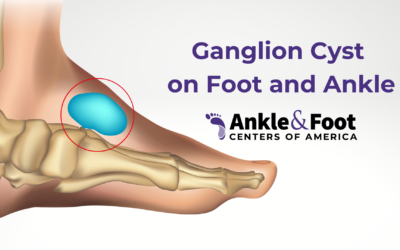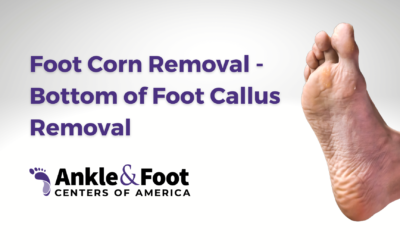Plantar warts are typically not a serious medical condition, but they can be bothersome and may interfere with daily activities such as walking or standing for long periods of time. What is a Plantar Wart? A plantar wart, also known as a verruca, is a benign skin growth that occurs on the soles of the feet. Plantar warts may appear as small, rough bumps or as larger, cauliflower-like growths. They can be difficult to treat and may require multiple treatments to fully resolve. It is important to seek medical attention if you suspect you have a plantar wart, as it can easily spread to other areas of the foot or to other people.
Causes of Plantar Warts
 Plantar warts are caused by the human papillomavirus (HPV), which enters the skin through small cuts or breaks in the surface of the skin on the soles of the feet or toes. HPV is a highly contagious virus that can be contracted from direct contact with an infected person or surface. Certain factors can increase the risk of developing plantar warts, including having a weakened immune system, being a child or teenager, and walking barefoot in public places. Individuals with a history of plantar warts or other types of warts are also at an increased risk of developing plantar warts. The virus that causes plantar warts thrives in warm, moist environments, which is why they often occur on the soles of the feet and on toes where conditions are optimal for the virus to thrive. Our podiatrists in Nashville, Tennessee are experts at treating this condition.
Plantar warts are caused by the human papillomavirus (HPV), which enters the skin through small cuts or breaks in the surface of the skin on the soles of the feet or toes. HPV is a highly contagious virus that can be contracted from direct contact with an infected person or surface. Certain factors can increase the risk of developing plantar warts, including having a weakened immune system, being a child or teenager, and walking barefoot in public places. Individuals with a history of plantar warts or other types of warts are also at an increased risk of developing plantar warts. The virus that causes plantar warts thrives in warm, moist environments, which is why they often occur on the soles of the feet and on toes where conditions are optimal for the virus to thrive. Our podiatrists in Nashville, Tennessee are experts at treating this condition.
Symptoms & Signs of a Plantar Wart
Plantar warts can cause a variety of symptoms, including pain or tenderness when standing or walking, especially on the affected area. The wart may also feel like a small pebble in the shoe. In some cases, the skin around the wart may be thickened, making it difficult to see the wart itself. Plantar warts can also be itchy, and may even bleed or become infected if scratched or picked at. If left untreated, plantar warts can spread to other areas of the foot or to other people.
These warts can be often times be identified by their appearance and location. They typically appear as small, rough bumps on the soles of the feet, with tiny black dots in the center. These black dots are actually small blood vessels that have grown into the wart. The warts may be surrounded by thickened skin or calluses, and can be painful when pressure is applied. Plantar warts often occur in clusters and may merge together to form larger growths. To confirm the diagnosis, a healthcare professional may perform a visual examination or recommend a biopsy to rule out other conditions. It is important to seek medical attention if you suspect you have a plantar wart, as other conditions such as corns or calluses can have similar symptoms and may require different treatment.
Types of Treatment Plans for Plantar Warts
- Over-the-counter treatments for plantar warts typically include topical medications containing salicylic acid or cryotherapy products that freeze the wart. Salicylic acid works by breaking down
 the skin cells that make up the wart, gradually causing it to peel away from the skin. Cryotherapy products use a cold spray to freeze the wart, causing it to blister and eventually fall off. These treatments can be effective, but they can take several weeks to months to completely remove the wart. It is important to follow the instructions carefully and to continue treatment until the wart is completely gone, as stopping treatment too soon can allow the wart to grow back. If over-the-counter treatments are not effective, a healthcare professional may recommend other treatment options.
the skin cells that make up the wart, gradually causing it to peel away from the skin. Cryotherapy products use a cold spray to freeze the wart, causing it to blister and eventually fall off. These treatments can be effective, but they can take several weeks to months to completely remove the wart. It is important to follow the instructions carefully and to continue treatment until the wart is completely gone, as stopping treatment too soon can allow the wart to grow back. If over-the-counter treatments are not effective, a healthcare professional may recommend other treatment options. - Professional treatments for plantar warts may include prescription medications or medical procedures. Imiquimod is a prescription medication that stimulates the immune system to attack the virus causing the wart. Cantharidin is a chemical that is applied to the wart and causes a blister to form, which can then be removed. Medical procedures such as laser therapy, electrocautery, or surgical removal may be necessary to completely remove the wart. These procedures are typically done under local anesthesia and may require a period of recovery afterward. While these treatments may be more effective than over-the counter treatments, it is important to follow the recommendations of a professional to ensure the safe and effective removal of the wart.
- There are many home remedies for plantar warts, such as duct tape, apple cider vinegar, or garlic, but there is limited scientific evidence to support their effectiveness. In fact, some of these remedies can actually cause harm to the skin and may increase the risk of infection or scarring.
Plantar Wart Medical Removal Techniques
- Cryotherapy is a common medical procedure used to treat plantar warts by freezing the wart with liquid nitrogen. The temperature destroys the cells of the wart, causing it to blister and fall off.
 The procedure is generally safe and can be done in a professional’s office, but may require several treatments spaced over several weeks to completely remove the wart.
The procedure is generally safe and can be done in a professional’s office, but may require several treatments spaced over several weeks to completely remove the wart. - Salicylic acid is a common OTC treatment for plantar warts, but can be used in higher concentrations by an ankle and foot specialist. It is a topical medication that works by breaking down the skin cells that make up the wart, causing it to gradually peel away from the skin. The treatment involves applying the medication to the wart, filing the wart down, and then reapplying the medication. It can take several weeks to several months of consistent treatment to completely remove the wart.
- Laser treatment is a medical procedure that can be used to remove plantar warts. The procedure involves using a high-energy laser beam to destroy the cells of the wart. The procedure is generally safe and highly effective, but may require multiple treatments spaced over several weeks to completely remove the wart. Laser treatment may cause some pain, and there may be a risk of scarring or infection.
- Surgical removal is a medical procedure that can be used to remove plantar warts that have not responded to other treatments. The procedure involves cutting out the wart and surrounding tissue under local anesthesia. The procedure may cause some pain or discomfort and may require a period of recovery afterward.
Preventing Plantar Warts
Preventing plantar warts on feet can be challenging, but there are several tips that can help reduce the risk of developing them.
- Practice good hygiene by washing your feet regularly, and keeping them dry.
- Avoid walking barefoot in public areas, and wear shower shoes or sandals in these areas.
- Avoid sharing personal items such as towels or shoes with others.
- If you have a cut or scrape on your foot, keep it clean and covered with a bandage until it has healed.
- Avoid touching or scratching warts on yourself or others, as this can spread the virus that causes them.
By following these tips, you can reduce your risk of developing plantar warts and keep your feet healthy.
Conclusion
In conclusion, plantar warts can be a bothersome and persistent condition that can cause a variety of symptoms, including pain or tenderness on the feet. There are many different ways to handle a plantar wart, and it is important to discuss your options with a healthcare professional before deciding on a treatment. A foot specialist, also known as a podiatrist would be the best individual for you to see for a diagnosis if you are experiencing any of the symptoms of a plantar wart. It is important to address plantar warts early to avoid further growth and discomfort.




